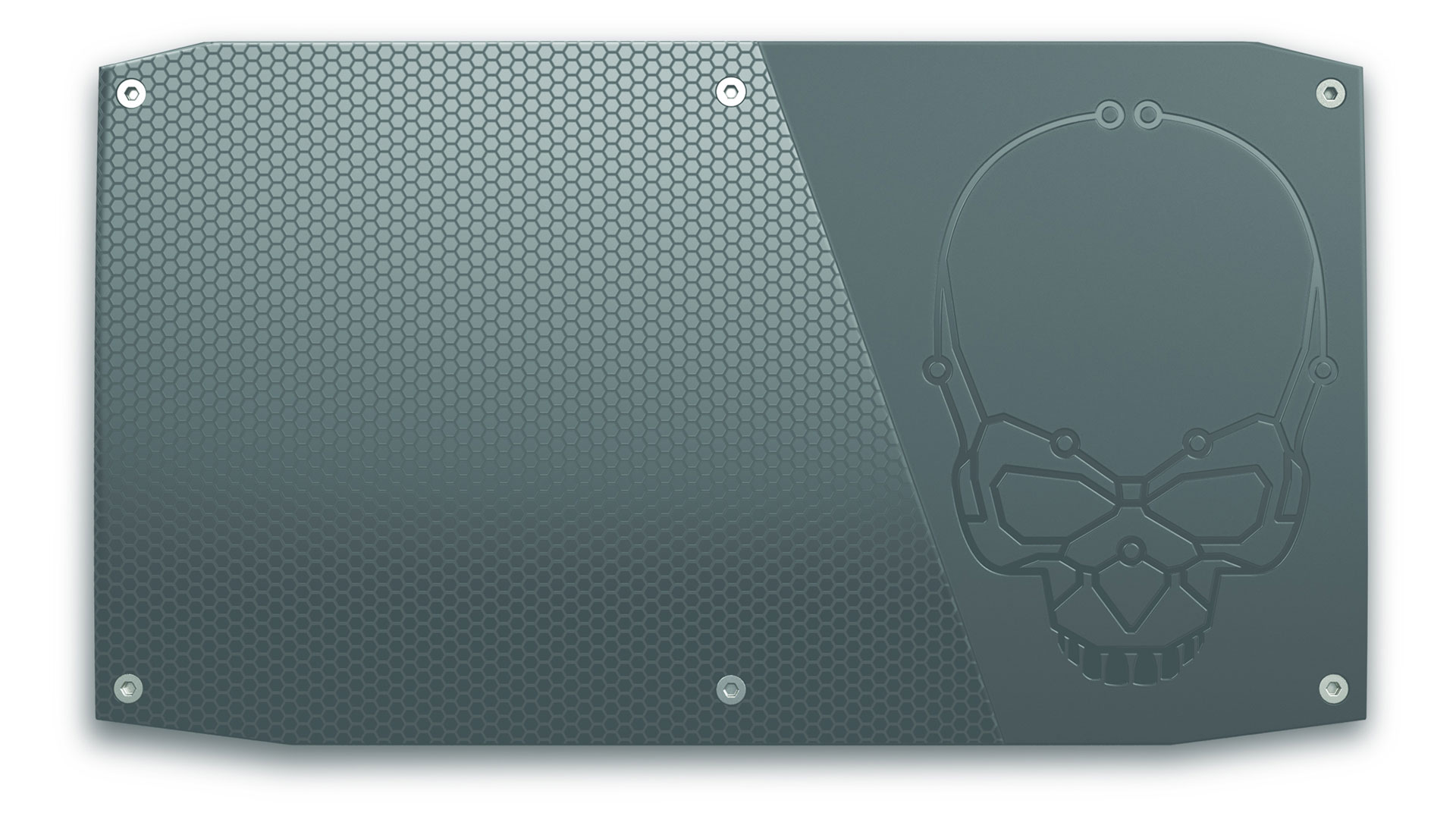Intel shows off Skull Canyon NUC with Iris Pro Graphics 580

What's the most popular graphics solution for PCs? If you're thinking Nvidia holds 80% or so of the market share, you're not wrong, but that's discrete graphics market share. On the whole, more people have Intel HD Graphics of some form than any other GPU. That's a bit of a problem, considering Intel's HD Graphics is the whipping boy of PC gamers. We've looked at their mobile and desktop solutions for years, and while there's no doubt they're getting better, there's still a rather large gap between what's commonly available and what gamers want.
Does that all change with Skylake and Iris Pro Graphics? No, but we do see yet another rather substantial increase in processor graphics performance. Skylake's Iris Pro Graphics packs 72 execution units (EUs), up from a maximum of 48 in Broadwell. Combined with architectural improvements, the newcomer potentially doubles the performance of the previous generation of Intel Graphics, and Intel is quoting a 50X performance improvement since their first generation HD Graphics from five years back.
A fifty-fold boost to graphics performance sounds pretty incredible, but what does that mean if we're talking Nvidia and AMD equivalents? Well, it's certainly not going to be at the same level of performance as the GTX 970 or R9 290, which are the minimum spec GPUs for Oculus Rift. Intel is also talking specifically about the performance of the i5-520UM compared to the new i7-6770HQ, which means they're comparing an old 15W part with a new 45W processor. But forget about being 50 times faster than an ancient graphics solution; what does it all mean in today's world?
We can actually make a pretty good estimate of Iris Pro Graphics 580 performance. By Intel Graphics standards, this is the best GPU they've ever made, and it should be a fairly decent graphics solution. With 72 EUs (Execution Units), each with 8 ALUs for calculations, we're looking at 576 shader cores running at up to 950MHz. Iris Pro Graphics 580 should be about 50-75% faster than the previous generation Broadwell Iris Pro 6200 performance (GT3e with 48 EUs / 384 shader cores), which was about half as fast as a GTX 750 Ti.
That still puts performance of Iris Pro 580 somewhat below the level of a GTX 750 Ti, but that was a pretty stellar $150 GPU when it launched…two years ago. These days, first-gen Maxwell chips can struggle at times with demanding games.

While we couldn't benchmark the solution yet, Intel was showing off their new Skull Canyon NUC, running with the i7-6770HQ. One of the units let us play Just Cause 3, at 1080p, and performance was actually quite decent. The problem is that the graphics settings were turned way down, so it was a bit like looking at a game running on Xbox 360. For games that aren't on the cutting edge, the new Iris Pro should be able to hit 1080p with good settings.
It's not just about performance either; Intel's graphics drivers have come a long way since 2011, and these days they support DX12 and generally don't have massive rendering errors, even on the latest games. They're by no means perfect, but they've gotten a lot better—by taking six generations of baby steps.
Keep up to date with the most important stories and the best deals, as picked by the PC Gamer team.
Perhaps more interesting are the remaining specs of the Skull Canyon NUC. In addition to the i7-6770HQ, Skull Canyon has a Thunderbolt 3 port, two M.2 SSD slots, and two SO-DIMM slots capable of running up to 32GB of DDR4 memory. As a compact PC capable of handling just about any task you might want to run, Skull Canyon is pretty sweet. Intel had Razer's Core on hand, hooked up to Skull Canyon and running a high-end GPU, running Just Cause 3 but at high quality settings. Performance was really good, which isn't too surprising considering the use of a $400 external GPU enclosure with a $400 GPU, connected to a NUC that will likely retail for $600 or more.

We'll be looking at Skull Canyon in the near future. It may not set the gaming world ablaze, but the fact that we're even able to compare an Intel GPU to a two-year-old mainstream Nvidia solution is quite promising. Another generation or two of such performance improvements and we could legitimately see everything short of AMD's R9 GPUs and Nvidia's GTX offerings swallowed by Intel's ubiquitous graphics. Of course for that to truly happen, we would need to see Iris Pro Graphics show up in more than the high-end $300+ processors, but we'll take whatever we can get.
Jarred's love of computers dates back to the dark ages when his dad brought home a DOS 2.3 PC and he left his C-64 behind. He eventually built his first custom PC in 1990 with a 286 12MHz, only to discover it was already woefully outdated when Wing Commander was released a few months later. He holds a BS in Computer Science from Brigham Young University and has been working as a tech journalist since 2004, writing for AnandTech, Maximum PC, and PC Gamer. From the first S3 Virge '3D decelerators' to today's GPUs, Jarred keeps up with all the latest graphics trends and is the one to ask about game performance.


